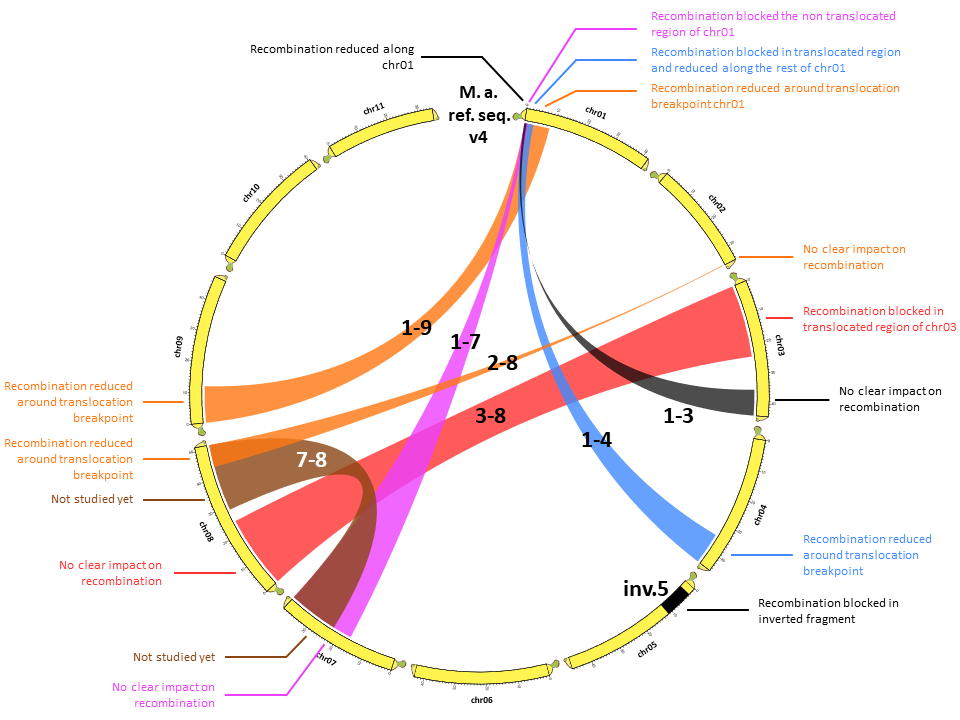Musa chromosome structure database
Martin et al, 2017 : Evolution of the Banana Genome (Musa acuminata) Is Impacted by Large Chromosomal Translocations.
Baurens et al., 2018 : Recombination and Large Structural Variations Shape Interspecific Edible Bananas Genomes

| Name | Accession Name | Ploidy | Genome α | Section | Species/Phylogenetic cluster β | Status γ | 1-4 | 3-8 | 1-7 | 2-8 | 1-9 | 7-8 | 1-3 | inv5 |
|---|
Legend:
- α Genomic composition.
- A: Musa acuminata
- B: Musa balbisiana
- S: Musa schizocarpa
- T: Musa textilis
- E: Ensete
- β AA cultivar classification was based on tree proposed by Perrier et al. 2011.
- γ Accession status.
- wild accession (seeded)
- cultivar (unseeded)
- hybrid produced at CIRAD breeding program in Guadeloupe
- δ Haplotype numbers with the translocated structure
- * Potentially a recombination occured in centromeric region.
- ** Unclear status, 2 markers suggesting the alternate structure versus 6. Requires 4 recombinations. Anyway, according to last marker, homozygous for the reference structure.
- *** DNA from ‘Mlali Mshia Wa Komba’ from Mayotte and ‘Ambihy_P1’ from Madagascar were obtained courtesy of X. Perrier. More details at Perrier et al., Annals of Botany, 2018
- b Signal difficult to interpret because many shared alleles with accesssion with the alternate structure.
- c Cytogenetic evidence
- d Deduced from the phylogenetic position relative to Musa balbisiana (Martin et al., 2023) that suggest that the inversion arose in Musa acuminata/Musa schizocarpa lineage.